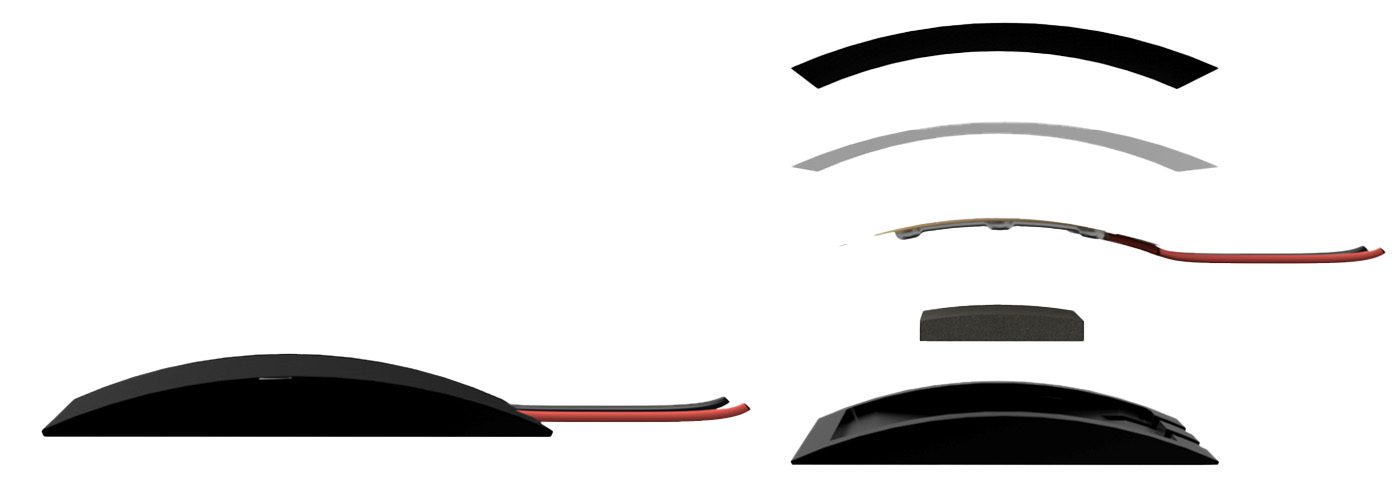Flexible Piezo Haptics: Achieving Realistic Tactile Feedback for Modern Interfaces
Flexible Piezo Haptics: Achieving Realistic Tactile Feedback for Modern Interfaces
In today’s tech-driven world, tactile feedback technology has advanced significantly, delivering highly nuanced and immersive user experiences. PUI Audio’s latest haptic solutions leverage flexible piezo haptics to bring rich, tunable sensations to users, enhancing not just the feel but also the functionality of products. Let’s explore how this innovative technology works, its applications, and what makes PUI Audio’s flexible piezo haptic solutions stand out.
Understanding the HD-PAF1419: Precision-Driven Tactile Feedback
The HD-PAF1419 is designed to replicate real-world sensations by producing a range of high-fidelity, customizable waveforms. Engineers can tune these waveforms to capture specific tactile experiences, from a steady pulse to the sharp strike of a clock tick. The HD-PAF1419 achieves this through precise control over waveform characteristics, including amplitude, frequency, and harmonic content.
Key Features of Flexible Piezo Haptics:
- Customizable Waveforms: The HD-PAF1419 allows for a range of waveform profiles, where waveform peaks signify moments of heightened tactile feedback. By adjusting these peaks, engineers can simulate everything from subtle textures to dynamic impacts.
- Frequency and Harmonic Tuning: Harmonic content enriches the tactile experience, allowing the HD-PAF1419 to mimic natural sensations accurately. This capability is essential for applications like distinguishing different materials, simulating movement, or conveying urgency.

Practical Applications of Tunable Haptic Feedback
The flexibility of waveform design enables a variety of sensory effects. By programming the HD-PAF1419 with periodic waveforms, engineers can produce sensations like a clock ticking or a heartbeat pulse, recognizable and easy to interpret. On the other hand, irregular or aperiodic waveforms are ideal for simulating more complex sensations, such as the crackling of electricity or the flowing of water.
For example:
- Clock Tick Simulation: A waveform with defined attack, sustain, and release phases mimics the mechanical sensation of a clock tick, creating an impact that synchronizes with audio cues for a multi-sensory experience.
- Electric Pulse: The HD-PAF1419 can generate a random sequence of energy peaks and troughs, replicating the unpredictable nature of electrical pulses.

Integrating Flexible Haptics: Application and Design Considerations
PUI Audio’s flexible piezo haptic actuators are built to integrate seamlessly into a range of applications, both flexible and rigid. The adaptable design ensures secure attachment and maximum energy transfer, enhancing the haptic effect.
Flexible Applications
These actuators can be embedded into flexible substrates, allowing precise energy transfer for wearables or other devices that conform to the user’s body. Secure attachment is ensured using adhesive options:
- Heat-Activated or Pressure-Sensitive Adhesives: Depend on materials and application requirements, with a recommended bonding temperature below 100°C.
- Cover Material Compatibility: Ensures the actuator’s vibration performance is preserved, while providing protection against electrical shock and humidity.

Rigid Applications
For rigid surfaces, piezo haptics can also be mounted effectively. Foam support or strain relief measures around the actuator ensure both stability and durability. PUI Audio provides specifications for soldering and conductive paste application to ensure effective electrical connections while avoiding stress on the flexible PCB substrate.
Soldering and Electrical Connections
When integrating the HD-PAF1419, follow these guidelines for optimal performance:
- Lead Wires: Choose PTFE-coated wires rated to withstand temperatures above 200°C.
- Solder Profile: Use SnAuCu or SnCu alloys with a manual iron, maintaining a temperature of 350°C for no longer than one second to avoid damage.

Conclusion: Building Better Interfaces with Realistic Haptics
PUI Audio’s flexible piezo haptic solutions offer audio engineers a new realm of tactile customization. With the HD-PAF1419, designers can produce haptic feedback that feels real and resonates with users, whether mimicking everyday textures or simulating unique, immersive sensations.
For more information on integrating PUI Audio’s haptics into your products, contact us through our form to discuss how our advanced haptic technology can elevate your user experience.
